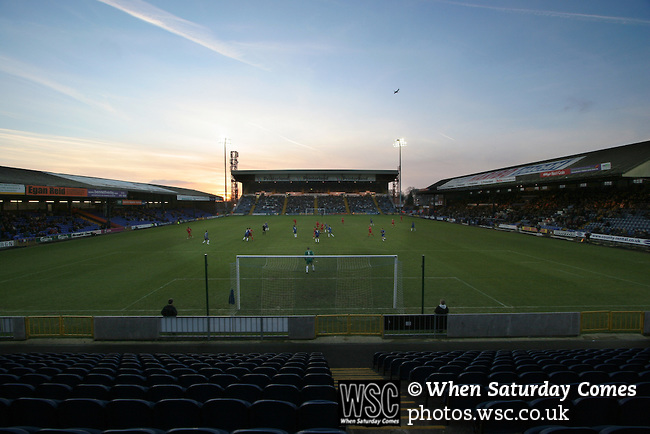Search: 'Stockport County'
Stories
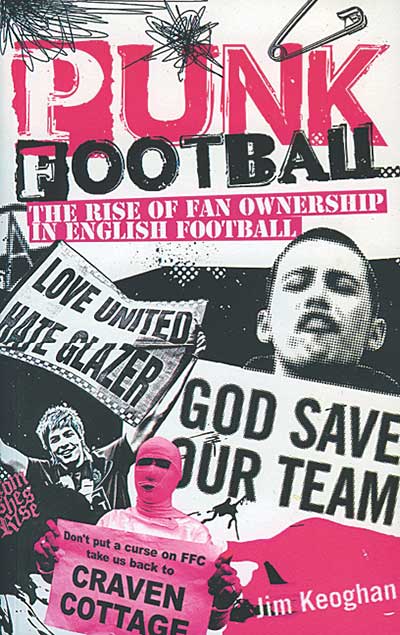 The rise of fan ownership in English football
The rise of fan ownership in English football
by Jim Keoghan
Pitch Publishing, £12.99
Reviewed by Tom Davies
From WSC 332 October 2014
It is surprising that the rising supporter activism of the past three decades – from the inky anger of 1980s fanzines to the thoughtful campaigning on governance and club ownership of the supporters’ trust movement – has not been more widely chronicled. Jim Keoghan has made one of the few readable stabs at drawing all these stories together in Punk Football, which traces how fan protest has shaped the game in recent times, including where it has failed and the formidable forces it is up against.
With a useful introductory section looking at the history of how English football and its clubs came to be organised as they are, with the transition from members’ clubs to private companies that accompanied the rise of professionalism and mass spectatorship at the back end of the 19th century, Keoghan rightly places the structure of clubs at the centre of the story. So developments such as the abolition of the maximum wage, the formation of the Premier League and Bosman are given full acknowledgement.
Many of the stories here will be familiar enough – the anti-bond scheme protests at West Ham United in 1991-92, the fight to stop Rupert Murdoch’s takeover of Manchester United, the formations of FC United and AFC Wimbledon, meltdowns and fights back at Brighton, York, Portsmouth and elsewhere – but Keoghan has done an impressively exhaustive research job in talking to key protagonists about how the idea of supporter control, at club level if not, alas, at national administrative level, has taken root.
He’s not blind to where things have gone wrong – a chapter is given over to failures of varying degrees at places such as York, Notts County and Stockport, though it is debatable whether we need the one on where directors have done right by their clubs. Many of Keoghan’s interviewees also concede the underlying tension between those fans who care only about results and those prepared to be more political about it.
He looks abroad too, at the strengths and occasional weaknesses of fan ownership in Spain, Germany and Sweden, acknowledging the underlying economic and political explanations for these developments, such as the much later arrival of professionalism in Germany. That many fans in Sweden have rallied to the defence of their own model despite a lack of big club success in Europe that might have prompted a frantic dash to turbo-charged commercialism is also noteworthy.
At times it’s unclear whether Keoghan, an Everton fan, is writing for an uninitiated or deeply committed audience – do we really need the Bill Shankly “life or death” quote, the introductory blurb about the nature of fan loyalty or the apparent astonishment that a League Two game is as passionate and committed as a top Premier League encounter? In light of this, editing errors that have Rochdale and Exeter at points given the suffix “United” to their club names jar. The absence of any significant discussion of Hillsborough – the single most momentous event around which the late 1980s/early 1990s fanzine and activism boom took place – also seems curious.
The phrase “Punk Football” itself, too, woven liberally through the text, also feels a little forced. If we’re going to run with music analogies, supporter activism is now deep into its post-punk phase, the initial outpouring of unfocused anger and energy having made way for something much more creative and influential. But these quibbles do not detract from the fact that this is an important book, well balanced and accessibly written, and a very handy primer for those looking for an easy account of how organised fandom has evolved, and what they themselves can contribute. To run with the punk metaphor and paraphrase the famous 1977 fanzine rallying call, this is one football club’s story, this is another, this is a third – now run your own one.
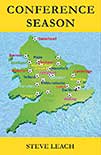 by Steve Leach
by Steve Leach
Bennion Keaney Ltd, £11.99
Reviewed by Matthew Gooding
From WSC 329 July 2014
Often erroneously likened to a fifth division of the Football League, the Football Conference could more accurately be described as a halfway house. Non-League’s top tier is home to a curious mix of teams; professional clubs who have fallen on hard times compete alongside new names making their way up the pyramid and getting a first taste of the big time.
Into this world steps Steve Leach, a Manchester City fan who, having grown disillusioned with the commercialisation and “over-paid prima donnas” of the Premier League, decides to focus his attentions on non-League instead. Conference Season is a diary of his travels around the country in the 2012-13 season, during which he takes in a match at every Conference club as he bids to “rediscover the soul of professional football”.
Throughout the book you get the impression that the author yearns for the days of his youth in the 1950s and 1960s, when top-level football matches were attended by thousands of working-class folk from their local community. Large crowds and red-hot atmosphere are certainly not in abundance in the Conference, and Leach’s wish to paint the league as a window to a glorious bygone era means he ignores the fact that it is a competition which is often as distorted by money and egotistical owners as the Premier League he wants to leave behind. As a result, Hyde’s tie-in with Manchester City, where they were paid to change their club colours to sky blue and remove the “United” part of their name, is briefly mentioned but not subjected to any critical analysis. Ditto an acrimonious boardroom split he encounters at Macclesfield, while the many battles for control of the author’s hometown club Stockport County, which sparked their rapid descent through the divisions from League One to the Conference North, are not touched on at all.
We rarely hear from fans of the teams involved. When Leach does engage them in conversation, it tends to be on matters of player selection and form, rather than looking at the joys of supporting a non-League side and the role their club plays in the community. As a result, the whole affair feels somewhat distant, and all we are left with are a series of clunky anecdotes and the author’s glib and often patronising observations; seasoned non-League supporters will enjoy his amazement at the fact that two sets of fans can co-exist in the same bar without resorting to violence, or that some games of football are played without crowd segregation.
Leach is a professor of Local Government, and it becomes apparent this is where his expertise lie as he describes the growth, and in some cases decline, of the towns he visits with passion and insight. It’s a shame that the football side of Conference Season rarely delivers either of these qualities.
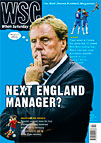 Dear WSC
Dear WSC
The article on the FA Cup’s longest tie (Draw to a close, WSC 298) reminded me of what I believe is still officially the longest single match between two English sides – the second leg of a Division Three cup tie between Stockport County and Doncaster Rovers on March 30, 1946. After extra time, the score stood at 2-2 – which was also the score following the first leg. Having checked with the local authorities, the referee let the game carry on until one team scored, the original Golden Goal. After 203 minutes and with darkness setting in, the match was finally brought to an end. The story goes that fans left the match to go home for their tea and returned later to carry on watching. The replay at Doncaster was won by the home team 4-0. This might not be quite as impressive as the longest football match ever, which I believe currently standards at 57 hours. This epic encounter between Leeds Badgers and Warwickshire Wolves in 2010 was played to raise money for charity.
Alan Bredee, Enfield
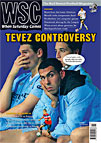 Dave Hannigan on George Best’s brief spell playing for Cork Celtic
Dave Hannigan on George Best’s brief spell playing for Cork Celtic
Three days after Christmas, 1975, 12,000 fans were shoehorned into Flower Lodge to see George Best make his debut for Cork Celtic in the Bass League of Ireland. At that point in his travels through the world game, Best’s latest club had been Fourth Division Stockport County. They had reportedly paid him £300 per game. Cork Celtic had lured him across to Ireland with the offer of £1,000 per outing and, for his first game against Drogheda United, Celtic took in £6,000 at the turnstiles.
